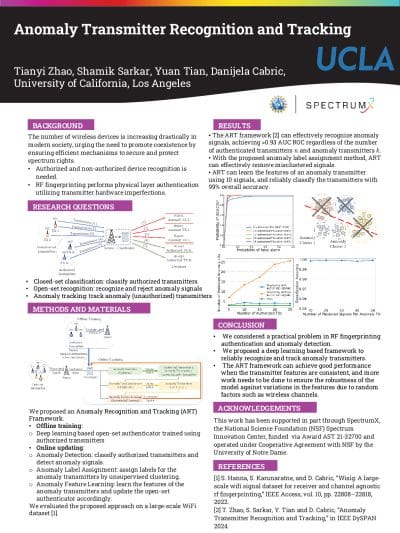Authors
Tianyi Zhao, Shamik Sarkar, Yuan Tian, Danijela Cabric
Abstract
Device authentication and identification are important to ensure security in spectrum access and management. While prior works have studied radio frequency fingerprinting for such purpose and demonstrated its effectiveness, most works have been focusing on closed-set classification, where only a known set of authorized transmitters appears to be identified. However, unauthorized transmitters can also exist in a designated band. Therefore, recognizing and tracking those unauthorized transmitter behaviors is necessary to protect spectrum security. This work investigates this problem and proposes an Anomaly Recognition and Tracking (ART) framework. The ART framework first learns a closed-set classifier between the authorized transmitters and modifies the classifier to detect anomaly signals. Then, the framework collects the detected anomaly signals and performs unsupervised clustering to assign labels to the predicted anomaly transmitters. Finally, the framework incrementally learns the anomaly transmitter features with limited signals and updates the classifier accordingly. We evaluate our proposed framework with a WiFi dataset and show that with 10% false alarm rate, it can detect more than 99% anomaly signals. Moreover, our proposed framework can distinguish between and learn the features of different anomaly transmitters with as few as 10 signals received from each anomaly transmitter. Finally, the framework can update the classifier, track the anomaly transmitters, and classify among all authorized and anomaly transmitters with more than 99% accuracy.

